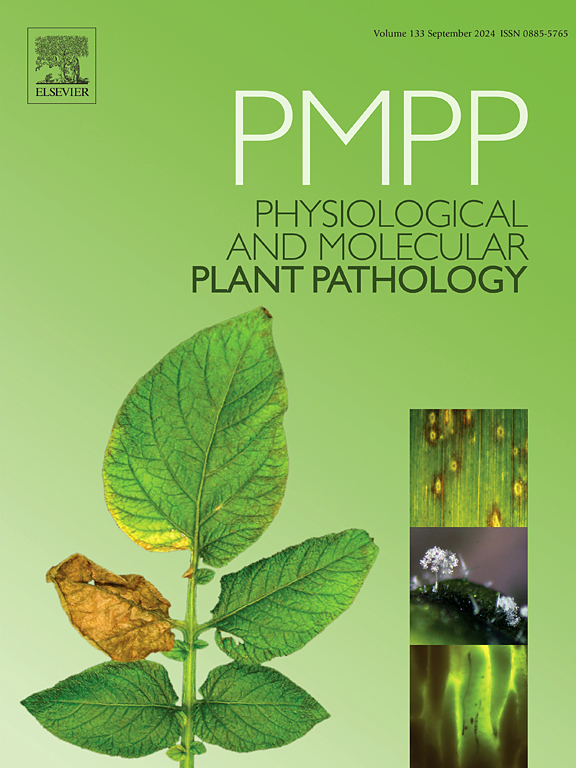揭示鸽子豌豆不育花叶病毒核衣壳蛋白的植物源抑制剂:分子对接、模拟和体外研究
IF 3.3
3区 农林科学
Q2 PLANT SCIENCES
引用次数: 0
摘要
鸽豌豆不育花叶病毒(PPSMV)造成重大的农业损失,特别是在鸽豌豆作物中。本研究评估了姜黄素对PPSMV的抗病毒潜力,姜黄素是一种从姜黄中提取的植物酚。计算分子对接和动力学模拟表明,姜黄素是−7.3 kcal/mol的高亲和抑制剂,通过强疏水和氢键相互作用与PPSMV核衣壳蛋白结合。温室试验证实了姜黄素的有效性,接种前处理浓度为300 ppm时,病害发生率最低(6.67%),且显著促进植株生长。Real-time PCR结果显示,接种后21天,处理植株的病毒cDNA水平显著降低了7.47 × 104。回归分析的R2值为0.907,表明病毒滴度对发病率有显著影响。这些发现突出了姜黄素作为控制PPSMV的合成农药的环保替代品的潜力,为其分子相互作用和抗病毒机制提供了见解。本文章由计算机程序翻译,如有差异,请以英文原文为准。
Unveiling plant-derived inhibitors for nucleocapsid protein of pigeonpea sterility mosaic virus: Molecular docking, simulation and In vitro investigations
Pigeonpea sterility mosaic virus (PPSMV) causes significant agricultural losses, particularly in pigeonpea crops. This study evaluated the antiviral potential of curcumin, a phytophenol derived from Curcuma longa, against PPSMV. Computational molecular docking and dynamics simulations revealed that curcumin is a high-affinity inhibitor of −7.3 kcal/mol that binds to the nucleocapsid protein of PPSMV through strong hydrophobic and hydrogen bond interactions. Glasshouse trials demonstrated the effectiveness of curcumin, with pre-inoculation treatments at 300 ppm achieving the lowest disease incidence (6.67 %) and significantly promoting plant growth. Real-time PCR revealed a significant reduction of 7.47 × 104 in the level of viral cDNA in treated plants at 21 days post inoculation (dpi). The regression analysis revealed an R2 value of 0.907, suggesting that the virus titer had a significant effect on the percent disease incidence. These findings highlight the potential of curcumin as an eco-friendly alternative to synthetic pesticides for managing PPSMV, offering insights into its molecular interactions and antiviral mechanisms.
求助全文
通过发布文献求助,成功后即可免费获取论文全文。
去求助
来源期刊
CiteScore
4.30
自引率
7.40%
发文量
130
审稿时长
38 days
期刊介绍:
Physiological and Molecular Plant Pathology provides an International forum for original research papers, reviews, and commentaries on all aspects of the molecular biology, biochemistry, physiology, histology and cytology, genetics and evolution of plant-microbe interactions.
Papers on all kinds of infective pathogen, including viruses, prokaryotes, fungi, and nematodes, as well as mutualistic organisms such as Rhizobium and mycorrhyzal fungi, are acceptable as long as they have a bearing on the interaction between pathogen and plant.

 求助内容:
求助内容: 应助结果提醒方式:
应助结果提醒方式:


